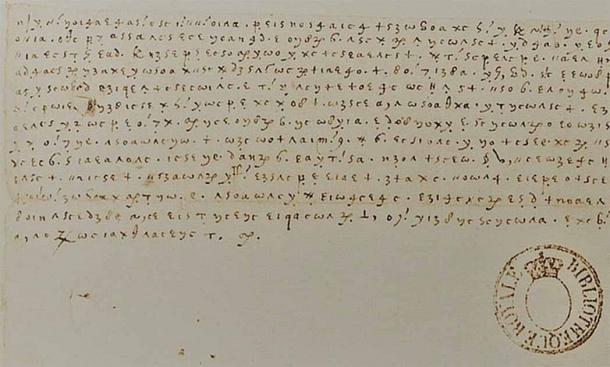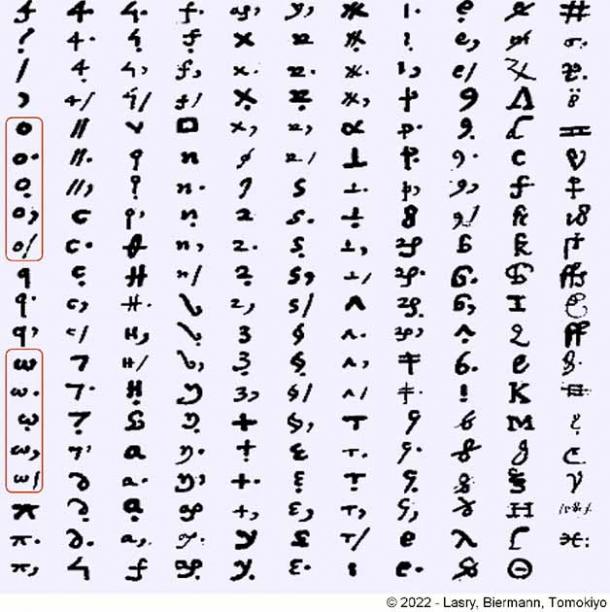
Researchers Decode Secret Encrypted Letters of Mary, Queen of Scots
Secret encrypted letters written by Mary, Queen of Scots during her imprisonment in England have been decoded.
Having been arrested and charged for plotting to murder her cousin, Queen Elizabeth I, on Feb. 8, 1587 AD, Mary, Queen of Scots was beheaded at Fotheringhay Castle in England. However, according to Marilee Hanson’s brilliantly researched 2013 book, The Execution & Death Of Mary, Queen of Scots, 1587 - “The truth of her demise was not so simple.”
Mary did indeed plot to end Elizabeth’s life; but over the 19-year course of her imprisonment, Elizabeth consistently rejected petitions to execute Mary. But by the end of the 16th century, the Catholic threat had become so great that Elizabeth reluctantly signed the warrant for Mary’s execution. Now, the inside ‘emotional’ story of these events have been discovered in a collection of 57 secret letters written in a coded language by the imprisoned monarch.
- A Royal Love Affair: The Mystery of Amy Robsart Dudley’s Death
- Mary, Queen of Scots: Tragic Heroine or Conniving Conspirator?

Section of one of the 50 scripts, made up of graphical symbols, found by the code breaker team in the national library of France. (Bibliotheque National de France)
Decoding A Monarch’s Screams For Help
After Queen Elizabeth I, her cousin, Mary Queen of Scots was next in line for the English throne, but in her representing Catholicism, Mary posed a significant threat to Elizabeth’s protestant reign. It was primarily for this reason Mary was imprisoned by Elizabeth for 19 years. The lost coded writings of the doomed 16th-century monarch were rediscovered by a team of codebreakers in the National Library of France archives.
Comprising 57 individual scripts written in graphical symbols, Mary wrote and sent these secret letters to her supporters while she was in captivity. A report in the Daily Mail explains that Mary was taught the secret code in childhood when she was educated in France. The coded letters date back from 1578 to 1584 AD, just a few years before Mary’s execution in 1587 AD and most of them were addressed to Michel de Castelnau, the French ambassador to England, who was a loyal supporter of the imprisoned Catholic queen.
- Queen Elizabeth I: The Controversies and the Accomplishments
- 9 Reasons for the Tragic Highlander Deaths in the Battle of Culloden

Initial decryption. (© 2022 Lasry, Biermann & Tomokiyo)
Game Of Codes
In the coded letters Mary often moans about the brutal conditions of her captivity, her declining health, and some even detail the unsuccessful negotiations with her captor, Queen Elizabeth I. The letters also reveal Mary’s distrust of Elizabeth, her spymaster Sir Francis Walsingham, and Robert Dudley, Earl of Leicester. And because Mary was convinced that Elizabeth was not negotiating her release in good faith, in one letter Mary warned the French ambassador that people in England were against the marriage of the Duke of Anjou, her brother-in-law, to Elizabeth.
Stepping back a few steps, to the undeciphered code, in the beginning, the team of code breakers had no idea about the identity of the writer, or the recipient of the letters. Lead investigator, George Lasry, a computer scientist and a member of the DECRYPT project, told Gizmodo that the 57 letters contained about “150,000 individual characters” which meant the initial transcription of the letters took much longer than the codebreaking. However, the first step towards deciphering the code was taken when the team identified “feminine French words,” which suggested the writer was a woman.

Full set of graphical symbols. (© 2022 - Lasry, Biermann & Tomokiyo)
Decoding Feminine Words First
How can you tell if a French noun is masculine or feminine? According to Optilingo: A noun is feminine if it ends in “-e” or “-ion.” The exceptions to this are the endings “-age,” “-ège,” or “-isme,” and nearly every other noun ending is masculine. The team of decoders noticed the words "Ma liberte" (my liberty) and "mon fils" (my son). But it was only after seeing the name “Francis Walsingham” that the codebreakers knew that the parent in captivity was Mary, Queen of Scots.
John Guy, who wrote the 2004 biography of Mary entitled “ Queen of Scots: The True Life of Mary Stuart,” told the Daily Mail that the discovery of the letters is a "literary and historical sensation" representing “the most important new find relating to Mary Queen of Scots in a century”. Guy also said that the most important aspect of the newfound insights into Mary’s life are the queen’s “inner “thoughts and feelings” while negotiating her release with Elizabeth.
In conclusion, the discovery and decoding of these secret letters written by Mary Queen of Scots in captivity offers historians true emotional content from an exceptionally turbulent time in European history.
Top image: Portrait of Mary, Queen of Scots, detail. Inset, Section of one of the 50 scripts, made up of graphical symbols, found by the code breaker team in the National Library of France. Source: Public Domain /inset; Bibliotheque National de France
By Ashley Cowie
References
Guy, J. (2005). Queen Of Scots: The True Life of Mary Stuart, Houghton Mifflin Harcourt
Marilee, H. (2015). The Execution & Death Of Mary, Queen of Scots, 1587















